Known as the world's happiest animal, the smiling quokka of Western Australia's Rottnest Island is like an excitable kangaroo that's the size of a cat.
Even if the name doesn’t sound familiar, you’ve likely seen a quokka before. They’ve become famous across the internet for their fuzzy squirrel-like appearance, their photogenic smiles, and their friendly attitude. What’s more, quokkas have little fear of humans, which means getting them to appear alongside you in a cute selfie isn’t too hard.
It’s not surprising that quokkas are often referred to as the happiest animals in the world. Though, like many animals around the globe, they face their own set of problems due to human encroachment and ecological concerns, but you’d never know it by looking at those winning grins.









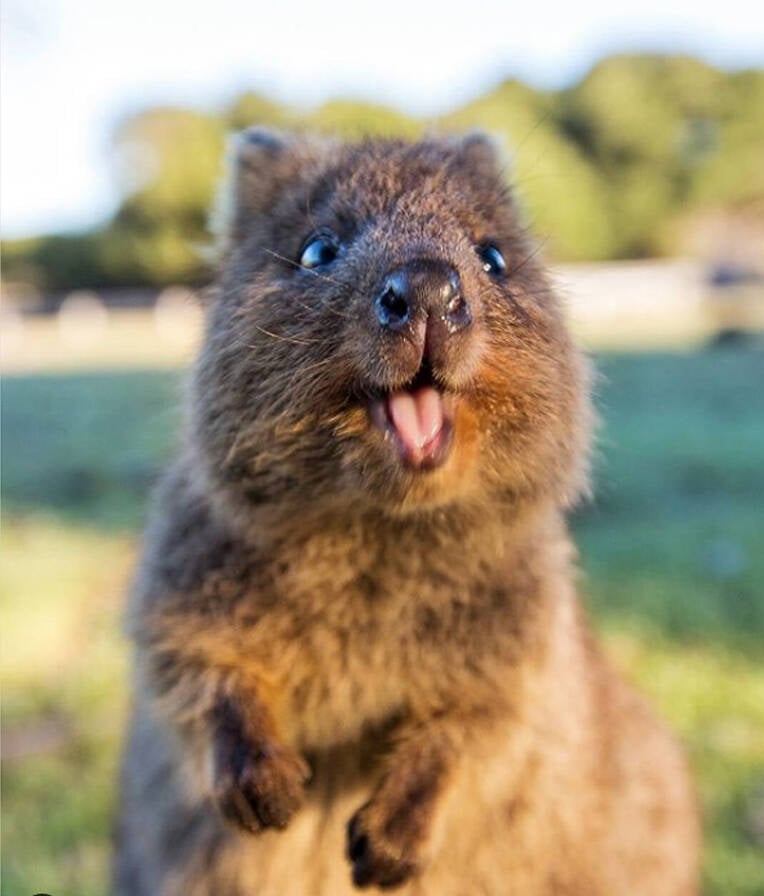




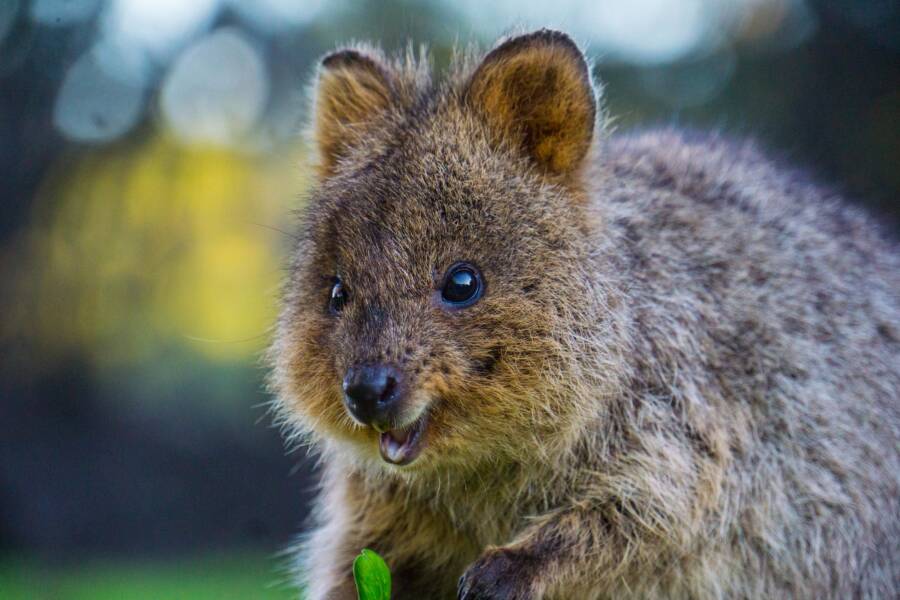


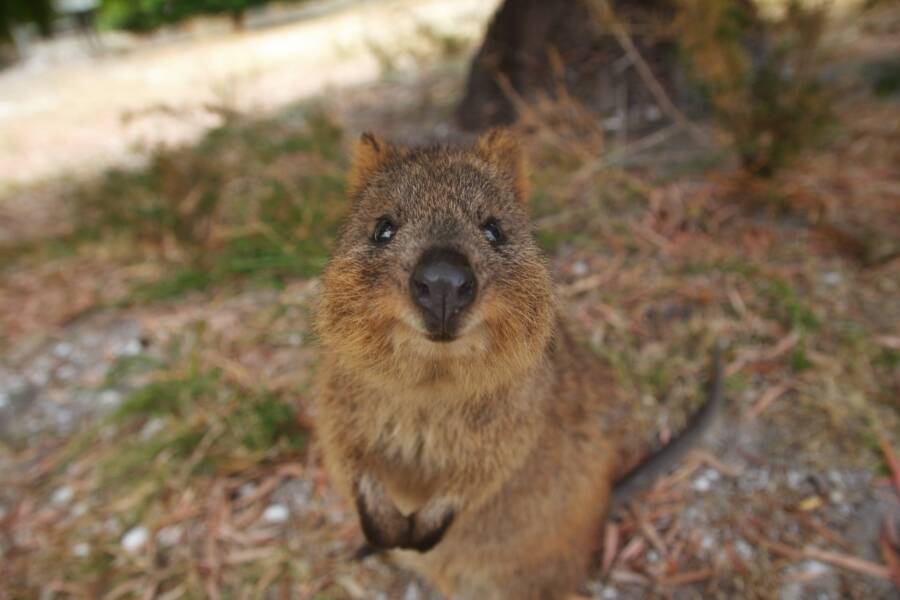




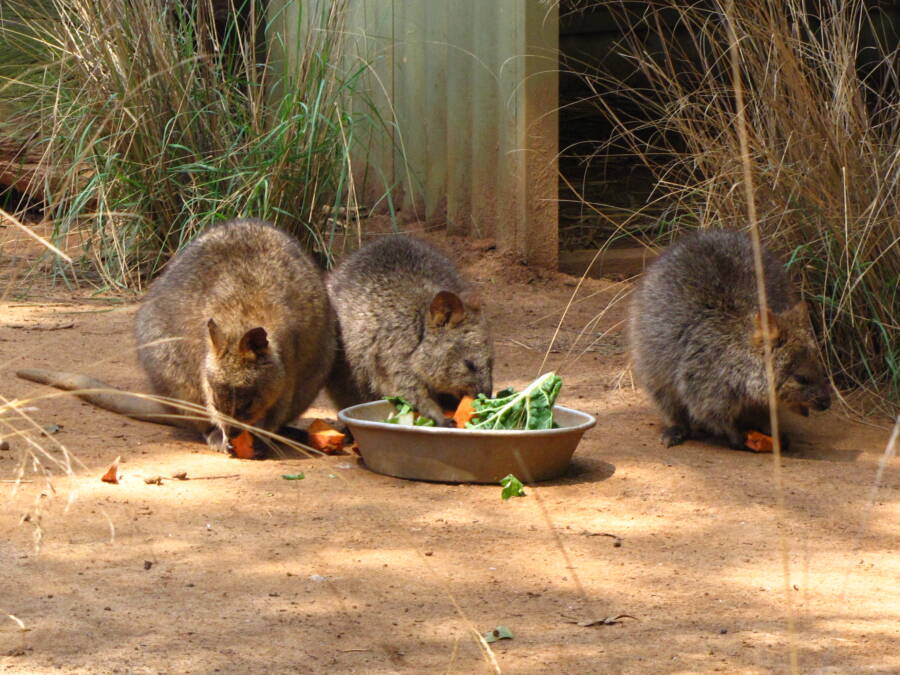
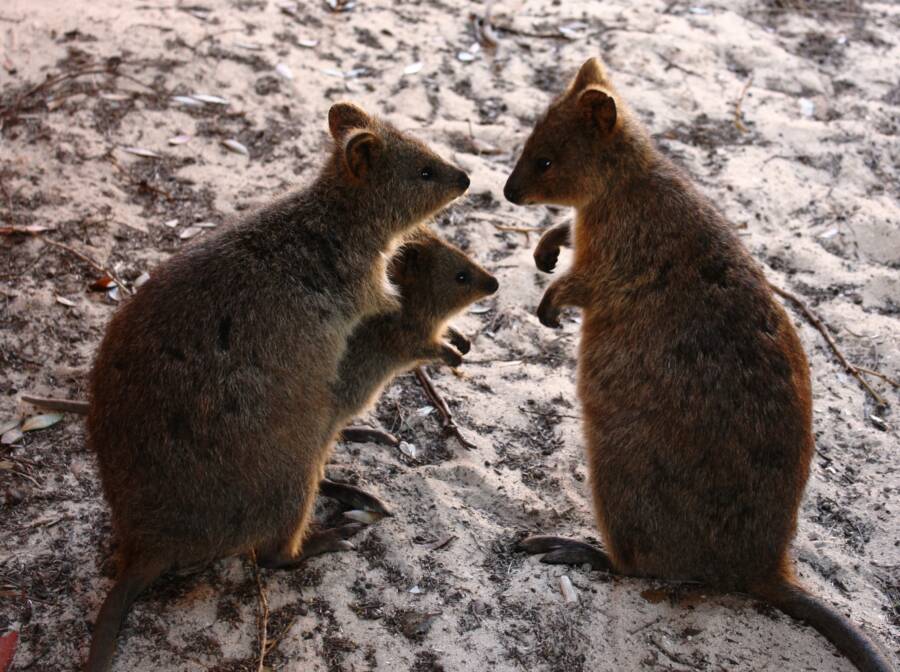
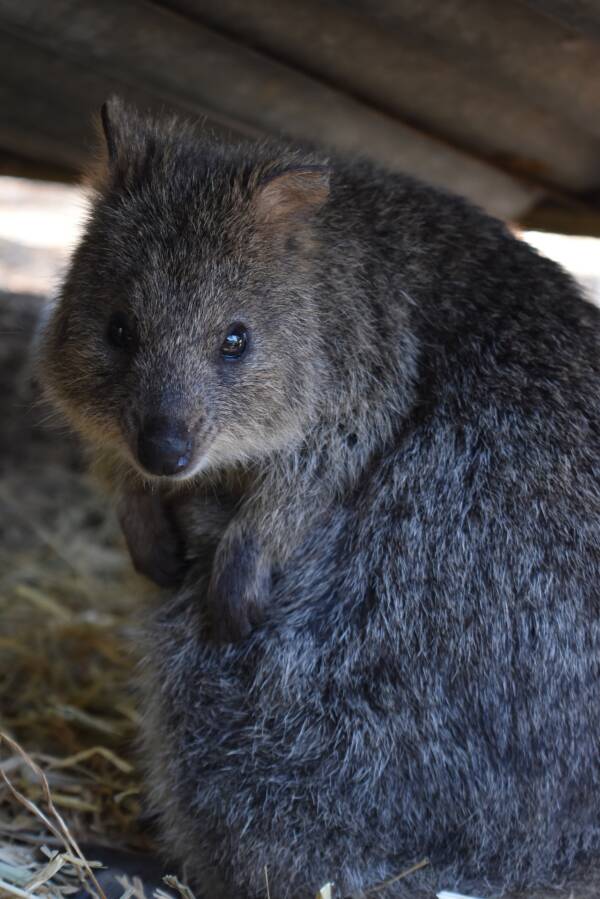
Like this gallery?
Share it:
And if you liked this post, be sure to check out these popular posts:
1 of 26
Chris Hemsworth and Elsa Pataky join the quokka selfie club.Charter_1/Instagram
2 of 26
quokkahub/Instagram
3 of 26
SimonlKelly/Instagram
4 of 26
Roger Federer at Rottnest Island ahead of the 2018 Hopman Cup, December 28, 2017.Paul Kane/Getty Images
5 of 26
quokkas.world/Instagram
6 of 26
international-programs/Flickr
7 of 26
Miss Shari/Flickr
8 of 26
The Duke and duch*ess of Cambridge feed a quokka during a visit to Taronga Zoo in Sydney. Anthony Devlin/PA Images via Getty Images
10 of 26
Daxon/Instagram
11 of 26
Samuel West/Flickr
12 of 26
Autumn, a baby quokka, is one of the marsupials on show during the spring baby boom at Taronga Zoo. Mark Nolan/Getty Images
13 of 26
Tennis players Angelique Kerber and Alexander Zverev of Germany take selfies with quokkas during a trip to Rottnest Island, 2019. Will Russell/Getty Images
14 of 26
Olivier CHOUCHANA/Gamma-Rapho via Getty Images
15 of 26
Samuel West/Flickr
16 of 26
foursummers/Pixabay
17 of 26
Samuel West/Flickr
18 of 26
geirf/Flickr
19 of 26
Keeper Melissa Retamales cradles Davey the Quokka as he enjoys a sweet potato star at Wild Life Sydney Zoo. James D. Morgan/Getty Images
20 of 26
Barni1/Pixabay
21 of 26
Virtual Wolf/Flickr
22 of 26
Barney Moss/Flickr
23 of 26
eileenmak/Flickr
24 of 26
Hesperian/WIkimedia Commons
25 of 26
trapperrnzphotography/Pixabay
26 of 26
Like this gallery?
Share it:




Meet The Australian Quokka, The Smiling Marsupial That Poses For Cute Selfies
View Gallery
To see those smiles for yourself and get your very own quokka selfie, first you'll have to travel to Rottnest Island, just off the coast of Perth in Western Australia, where most of them live. It's a protected nature reserve, but also has a small population of full-time residents in addition to as many as 15,000 visitors a week that pay a visit to see the adorable mammals.
Next, keep in mind that you're not allowed to handle the quokkas, nor feed them any people food, but luckily they are often curious and comfortable enough to come to you. It should be noted that however domesticated they may appear, Australian quokkas are still wild animals — even if they are used to having humans around, they will still bite or scratch if they feel threatened.
Welcome to the world of the smiling quokka, widely regarded as the cutest animal on planet Earth.
What Are Quokkas?
The adorable quokka — pronounced kah-WAH-kah by Australians — is a cat-sized marsupial and the only member of the genus Setonix, which makes them a small macropod. Other macropods include kangaroos and wallabies, and like these animals, quokkas also carry their young — called joeys — in pouches.
These animals can live for up to 10 years, are herbivores, and are mainly nocturnal. Despite this, you see quite a few photographed out and about during the day. Likely, they want to be where the people are... probably because people are famous for not listening to the rules and giving the quokkas food.
However, as much as smiling quokkas surely know they can get fed by human hands, this can prove dangerous. Some food, especially bread-like substances, can easily stick between quokkas' teeth and eventually cause an infection called "lumpy jaw."
Other foods can cause dehydration or sickness, so if tourists absolutely can't resist the urge to give them a treat, they should stick to offering them tender, tasty leaves or grass, like the swamp peppermint that constitutes much of the animal's food source.
How Smiling Quokka Selfies Helped Save "The Happiest Animal On Earth"
A National Geographic video about the Australian Quokka.
These adorable animals are actually considered "vulnerable to endangerment." This means that they are likely to become officially endangered unless some threatening circ*mstances improve. Usually, this means that the animal is losing its natural habitat in some way, and, unfortunately, it's no different for the quokka.
Agricultural development and expanded housing on the mainland reduced the dense ground cover quokkas relied on for protection from predators such as foxes, wild dogs, and dingoes. However, on Rottnest Island, their only predator is the snake. By 1992, quokkas on the mainland had been reduced in number by more than 50 percent. Now, only 7,500 to 15,000 adults exist in the world — most of them on Rottnest Island, where the quokka thrives.
Humans may have threatened them with deforestation, but Australia is trying reverse this trend now that the internet's newfound love of quokkas has given them a fighting chance for recovery. An increased interest has garnered greater protections for these cute little animals and Australia is now very firm in its laws regarding quokkas.
It's fine to lightly interact with them (including taking quokka selfies) but it's highly frowned upon to pet them or pick them up. And keeping one as a pet is highly illegal, as is taking them out of the country.
Furthermore, it's of course illegal to do anything violent to them. It's surprisingly disheartening that Australia needed to put such rules in place, but it's expressly forbidden to, say, use them as soccer balls or set them on fire.
The Lifecycle Of The Cat-Sized Kangaroo
A Perth Zoo video about quokka joeys.
While quokkas are already known for being cute, perhaps nothing on Earth is much cuter than quokka babies. A female quokka gives birth to a single baby after being pregnant for about a month. After birth, the joey stays in its mother's pouch for another six months and it's pretty common to see little joey's heads sticking out of their mom's pouch as they go about their day.
After six months in the pouch, the joey starts to wean itself off its mothers' milk and learns how to find wild food. Male quokkas will defend their mates when pregnant but don't do any of the child-rearing themselves. When a joey reaches about a year old they become independent of their mother. Though they might stay close to the family or a colony, but it will be a solitary adult.
Quokkas are pretty avid breeders. They mature quickly and can have up to two joeys per year. In a 10-year lifespan, they could produce 15 to 17 joeys.
They can also do something pretty unusual: embryonic diapause. This is the delaying of a fertilized egg's implantation in the mother's uterus until conditions are better for raising a joey. It's a natural reproduction strategy that keeps mom from expending energy to raise babies that perhaps wouldn't survive current conditions.
As an example, if a female quokka mates again shortly after giving birth they may hold off on the second joey until they see if the first joey survives. If the first baby is healthy and progressing well, the embryo will disintegrate. But if the first baby dies, the embryo will naturally implant and develop to take its place.
Probably the most shocking thing about such a sweet-looking animal is a new mom's strategy for escaping predators. If she encounters a particularly fast and dangerous one, chances are she will "drop" her joey to distract the predator long enough to escape.
You can guess what happens to the baby from here, but that's the way of nature, even for the quokka, the happiest animal on Earth.
After learning about the adorable quokka, read all about the incredible desert rain frog, the amphibian that broke the internet. Then, meet more of the cutest animals on Earth.